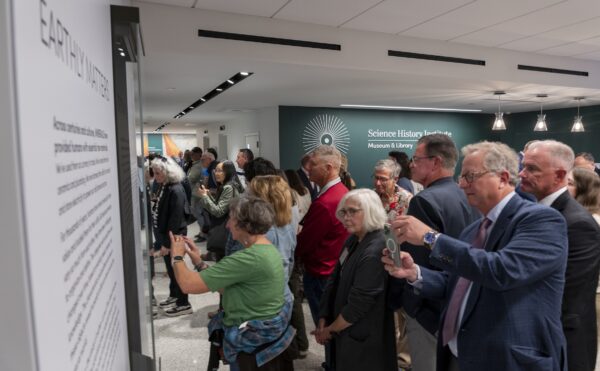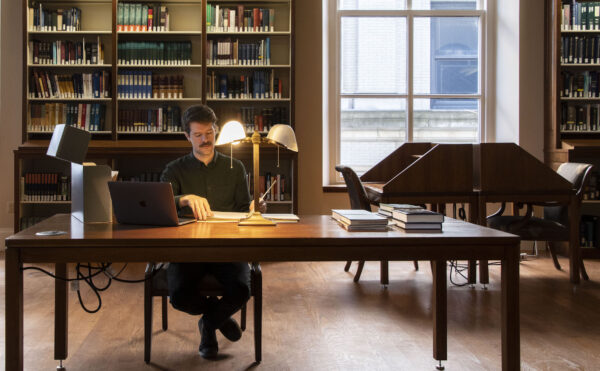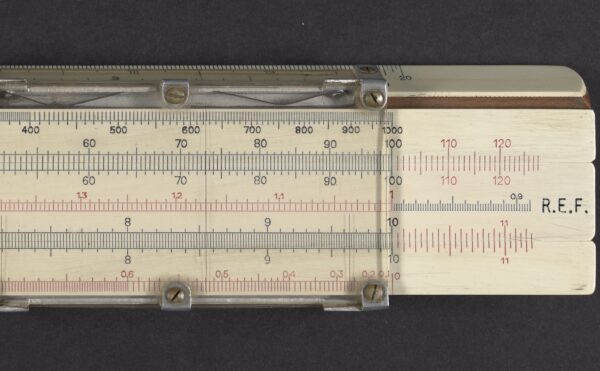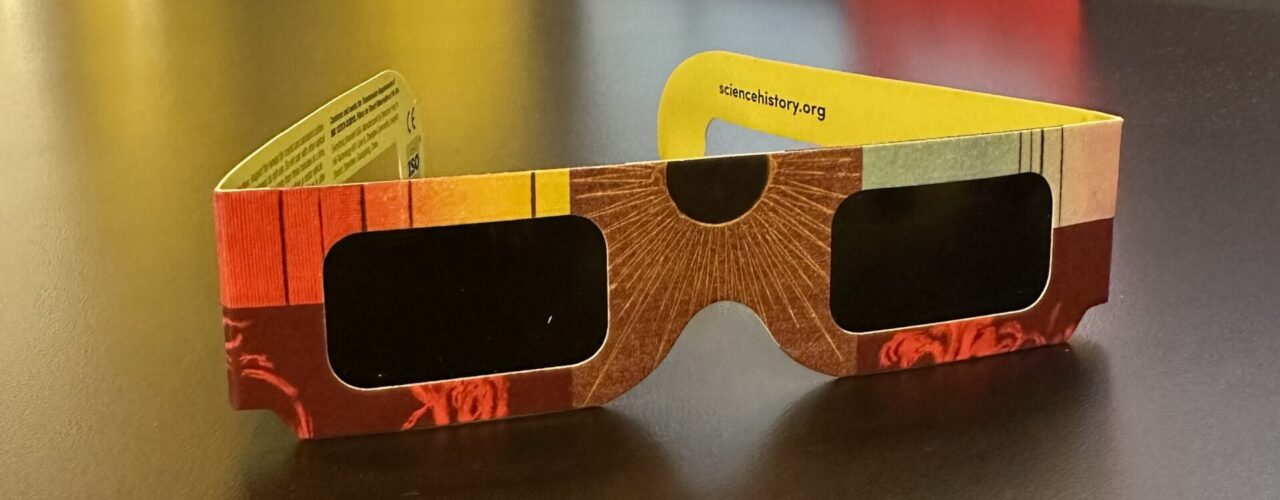
Get Ready for the 2024 Total Solar Eclipse with Free Science History Institute Glasses
Visit our museum for your very own pair of eclipse glasses to view the highly anticipated celestial event on April 8.
Are you ready for the total solar eclipse taking place on Monday, April 8, 2024? Well, we are!
Stop by the Science History Institute Museum Wednesday through Saturday from 10am to 5pm to pick up your free pair of eclipse glasses* so you can safely view this extraordinary natural phenomenon.
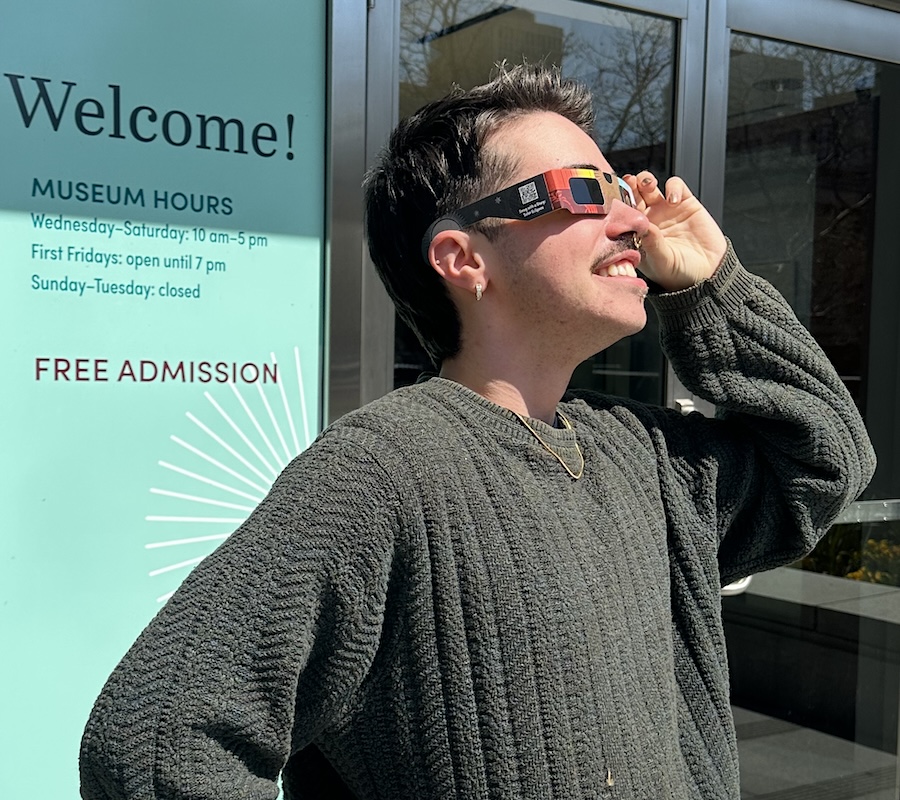
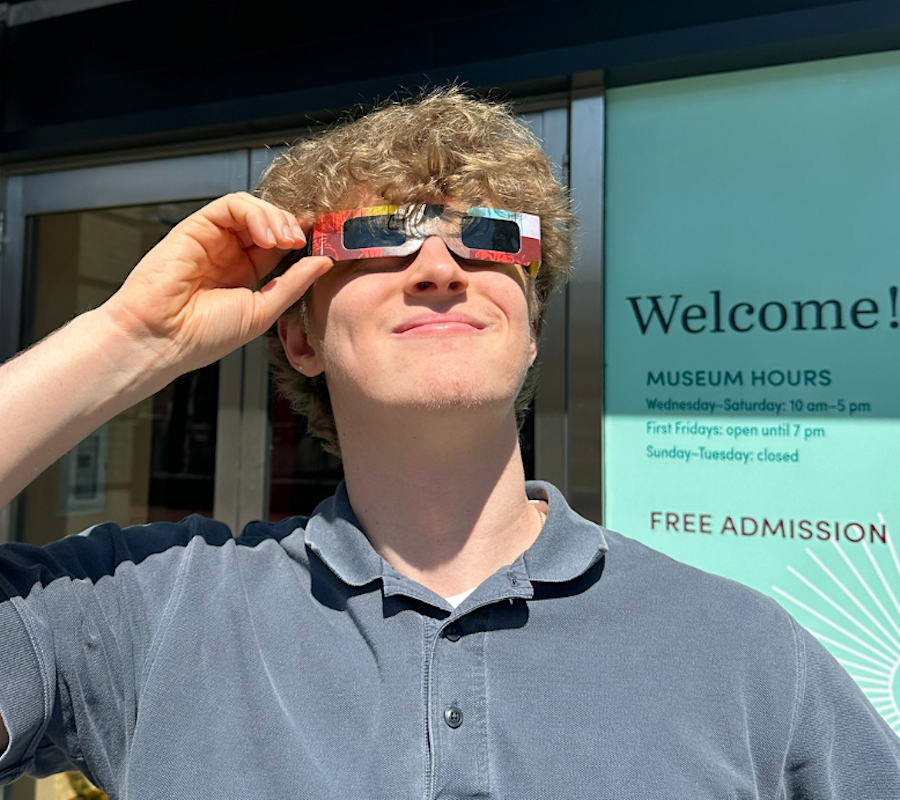
Visitor engagement manager Vaughn Tempesta (left) and gallery guide Jake Daly (right) show off their Institute solar eclipse glasses.
We’ll also be handing them out on April 5 at First Friday: A Celestial Celebration, where we invite you to embark on a cosmic journey with us. Delve into the mesmerizing realms of astronomy and space; touch, feel, and discover the instruments that paved the way for celestial revelations; and engage your creative side as you craft personalized star charts.
Dubbed the Great North American Eclipse, the path of totality will begin on the Pacific coast of Mexico, travel across 15 states in the U.S. (including near the Institute in Pennsylvania, New York, and Ohio), and end on the Atlantic coast of Newfoundland, Canada. The next opportunities to experience a total solar eclipse over the United States will be in 2044 (in North Dakota and Montana) and 2045 (as it crosses from California to Florida).
* Solar eclipse glasses are available for a limited time while supplies last.
Swag with a Story: Solar Eclipse
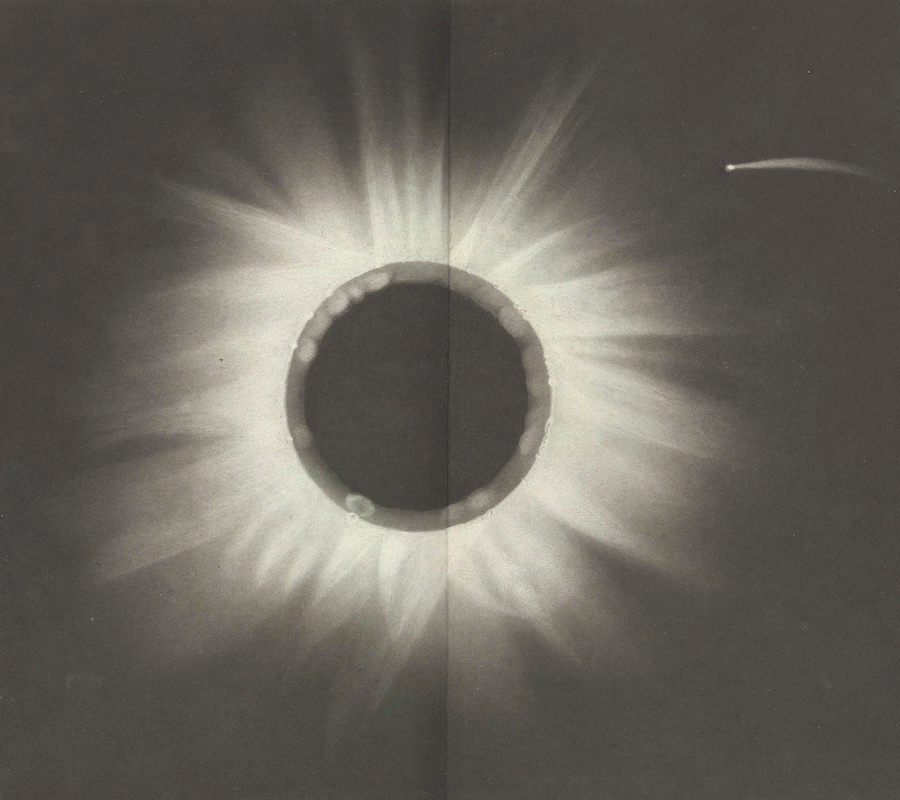
A total solar eclipse happens when the moon passes between the sun and Earth, completely blocking our view of the sun and darkening the sky as if it were dawn or dusk. You might think this is a rare event, but there are actually two to five solar eclipses per year, with a total eclipse taking place every 18 months or so (and only during a new moon phase). Whether you can see an eclipse depends on where you are in the world. And since a total solar eclipse is only visible from the same place on Earth once every 375 years on average, you’ll definitely have to travel to see another one!
As the sun is eclipsed, large dancing light forms called solar prominences burn brightly at the edge of the moon’s shadow. These twirling red flames remained a mystery until the famous solar eclipse of 1860, when two astronomers in different parts of the world photographed an eclipse for the first time and determined that these glowing tendrils were in fact coming from the sun’s surface. Since then, photography has been the primary tool of astronomers as they seek to unravel the secrets of our nearest star.
Spectroscopy—the study of the interaction of light and matter—is another tool for studying the sun. During the 1868 solar eclipse, Jules Janssen observed an anomalous line in the spectrum of solar prominences that did not match any known element. Norman Lockyer made the same discovery later that month. The reports by the rival astronomers were received by the French Academy of Sciences on the same day, so both are credited with the discovery of the new element helium (named for Helios, the Greek god of the sun).
Janssen travelled to observe many more eclipses during his career, including the 1870 eclipse in Algiers. In a thrilling and daring escapade, Jannsen had to flee occupied Paris in a hot air balloon to make the journey.
Safety First!
DO NOT look at the sun during an eclipse without solar eclipse glasses! With the exception of the brief total phase when the moon completely blocks the sun’s bright face, it is NOT SAFE to stare directly at the sun without specialized eye protection—even if Taylor Swift says she does. In addition, viewing any part of the sun through a camera lens, binoculars, or a telescope without a special-purpose solar filter secured over the front of the optics will also cause severe eye injury.
More News
Science History Institute Unveils New Mineral Exhibition at Packed Opening Celebration
Ribbon cutting officially opens Earthly Matters and brand-new gift shop, marking the completion of the Institute’s major lobby renovation.
Applications for 2026–2027 Beckman Center Fellowships Now Open
Researchers can apply by January 15 for various long- and short-term programs, including two-year curatorial fellowships.
Institute’s History of Molecular Biology Collection Featured in ‘Science,’ ‘Nautilus,’ ‘C&EN’
Press coverage highlights the significance of the recently acquired archive that includes Rosalind Franklin’s famous DNA image known as Photo 51 and her personal slide rule.

